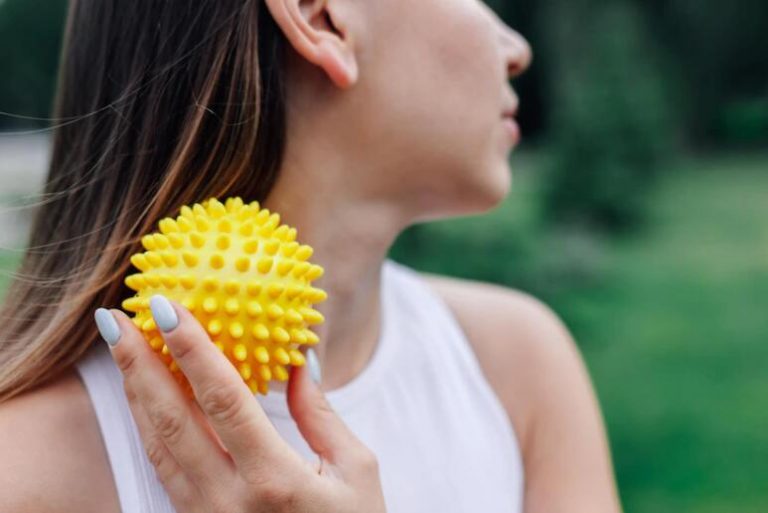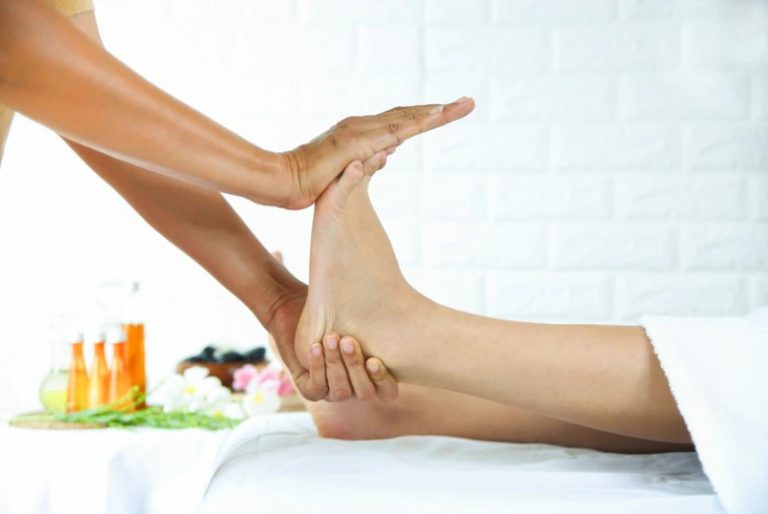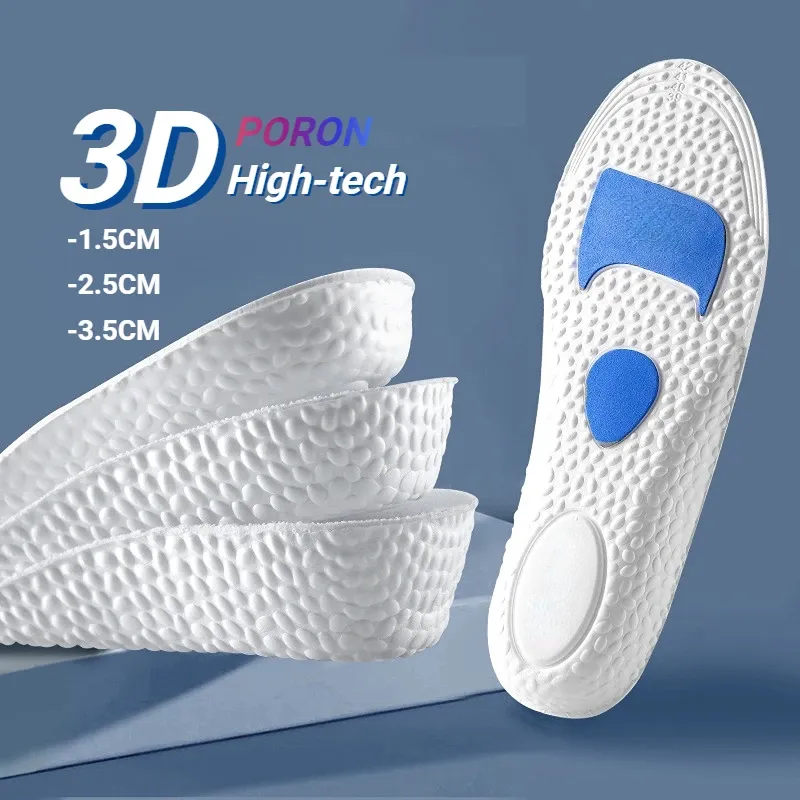10 Benefits of Wearing Ankle Compression Socks
One of the most overlooked areas of the body when it comes to health and wellness is the legs and feet. We often forget that these two parts of our bodies carry all of our weight around every day, which means they’re susceptible to aches, pains, and injuries. One simple way to combat this problem is by wearing ankle compression socks.
What does a compression ankle sleeve do?

The compression ankle sleeve is a compression garment that helps to improve circulation, reduce swelling and speed up the healing process. Often used by athletes and individuals who are recovering from injury, they are also useful for people suffering from varicose veins and swollen legs.
A compression ankle sleeve will have an elastic band that wraps around your ankle and a softer inner material that will help to compress your ankle. They can be worn during exercise or when walking around the house, but are not designed for use overnight.
Compression ankle sleeves can be worn by anyone who has swollen ankles or legs due to standing all day or sitting down for long periods of time. This includes those who are overweight or obese and anyone who has varicose veins because they both lead to increased pressure in the legs which causes fluid retention causing swelling which results in discomfort.
Benefits You Didn’t Know You’d Get From Wearing Ankle Compression Socks
1.Ankle Compression Socks are great for long-distance travel.
A common problem with long-distance travel is swelling of the lower legs. When you sit for a long time, your legs get compressed and your circulation can slow down. This can lead to swelling, which in turn causes pain and discomfort. Ankle Compression Socks help by increasing blood flow and circulation so that your body doesn’t have to work as hard to pump blood back up toward your heart. The result is that your lower legs won’t feel so tight or swollen after a long flight! If you’re going on a trip soon, be sure to pack some ankle compression socks in case you need them for any reason!

In addition, wearing compression socks can also prevent blood clots from forming during flights due to prolonged sitting periods (the “economy class syndrome”). A study found that wearing knee-highs reduced the risk of DVT (deep vein thrombosis), which is another type of blood clot often caused by sitting still for too long without moving around enough—similarly affecting travelers who spend an extended amount of time in their seats while flying between destinations
2.Ankle Compression Socks can reduce swelling in the legs and feet.
Ankle compression socks can reduce swelling in the legs and feet, which can improve your overall health. The increased circulation caused by ankle compression socks will increase oxygen flow to tissues and help with recovery after an injury or surgery.
Sweaty feet are caused by overactive sweat glands that produce a lot of moisture on hot summer days or when you’re feeling nervous. This excess moisture can cause stinky shoes and make your socks smell like onions, so it’s important to keep your feet dry!
Ankle Compression Socks are comfortable enough to wear all day long while helping heal damaged tissue due to injuries sustained during activities such as running, hiking or biking – all while reducing swelling in the legs and feet for faster healing times as well as reducing venous insufficiency (VI), venous stasis ulcers, blood clots and post surgical swelling in patients undergoing rehabilitation from hip replacement surgeries such as Total Knee Arthroplasty (TKA), Total Hip Replacement Surgery (THA), Partial Knee Replacement Surgery (PKR), Partial Hip Replacement Surgery (PHR) or even ACL reconstruction surgeries like ACL reconstruction using bone-patellar tendon-bone autografts along with hamstring tendons harvested from one side of each leg donor site; ACL reconstruction using hamstring tendons harvested from both side donor sites along with patellar tendon grafts; Lateral Approach Femur Osteotomy surgery where only one side needs be cut off completely – this method avoids unnecessary trauma caused by removing both sides equally thus preserving femoral length better than other methods including total knee arthroplasty where both sides need be removed equally causing unnecessary trauma since they may not need removal at all.”
3.Ankle Compression Socks may help prevent varicose veins from forming.
If you have varicose veins, ankle compression socks can help prevent them from getting worse. Here’s how:
- Varicose veins are caused by a weakening of the vein walls and valves in your leg. This allows blood to pool in the veins and makes them bulge outward from your body.
- Wearing compression socks helps reduce swelling and improves circulation, which can help stop varicose veins from forming or growing larger. When worn regularly for extended periods of time, these socks can also improve venous insufficiency (a weakness in the vein walls).
- The best way to prevent varicose veins is by staying active and maintaining a healthy weight. A healthy diet rich in vitamins C and E can also help prevent or treat mild cases of varicose veins before they become serious problems!
4.Ankle Compression Socks can increase blood flow and circulation.

You may have never thought about it, but the blood vessels in your legs are always working hard to keep your body functioning properly. They work to bring oxygen and nutrients from the heart and lungs throughout all of your organs and muscles. Ankle compression socks help increase blood flow by enhancing venous return, which is when blood returns to the heart from all around the body. This improves circulation, meaning that more oxygen and nutrients can get where they need to go faster—a great thing for athletes who want better performance!
Another benefit of ankle compression socks is that they improve lymphatic drainage. Lymph nodes are small glands found throughout our bodies that produce lymph fluid—a clear liquid containing white blood cells (immune cells), fats, sugars, excess red blood cells or bacteria from injuries or infections in order to protect against infection or disease. When this fluid is produced faster than it can drain naturally by gravity (such as when you are sitting down) the pressure builds up inside these glands causing swelling which impedes functionality over time if left untreated – not good! Wearing compression socks keeps those lymph nodes clear so they can do their job properly without getting backed up with waste material like bacteria or toxins causing inflammation issues further down south where things matter most – ouchy!!
5.Ankle Compression Socks may improve athletic performance.
If you’re an athlete, ankle compression socks may help improve your performance. Ankle compression socks can help prevent injuries by reducing the risk of cramping and swelling in the feet. In addition to improving blood flow and circulation, they can also reduce swelling in the legs and feet caused by standing for long periods of time or sitting with a crossed leg position. This is especially important for runners because it helps prevent varicose veins from forming. Runners who use compression socks have reported an increase in energy levels, which makes them more competitive during races.
6.Ankle Compression Socks can alleviate pain, soreness, and muscle strain.
Ankle Compression Socks can alleviate pain, soreness, and muscle strain. With that being said, they can help with recovery after an injury. If you have ever had shin splints or plantar fasciitis (i.e., heel spurs), these socks will help with recovery. Ankle Compression Socks can also aid in recovery after a workout because they will help to improve blood flow throughout your legs and feet.
7.Ankle Compression Socks can increase energy levels.
If you have poor circulation, ankle compression socks can help to improve blood flow to the lower legs and feet. This allows more oxygen to reach your brain, which may alleviate symptoms of fatigue. Ankle Compression Socks are also used by many athletes because they increase energy levels while simultaneously improving athletic performance.
The way ankle compression socks work is by increasing blood flow through the veins in your feet and ankles by applying gentle pressure on them throughout the day. By increasing this flow, it’s possible to speed up recovery time between workouts or sporting events while improving athletic performance overall!
8.Ankle Compression Socks can encourage faster recovery after a workout.
When you have ankle compression socks on, the tight fit helps to encourage faster recovery after a workout. The pressure from the socks will increase blood flow and circulation, which can alleviate pain, soreness, and muscle strain.
If you’re looking for a way to extend your exercise routine without getting injured or overexerting yourself too quickly, these kinds of compression socks are ideal for that purpose.
9.Wearing ankle compression socks is easy and convenient.
The benefits of wearing ankle compression socks are many, but one of the most important is that they are easy to wear. Ankle compression socks can be easily put on and taken off, which makes them easy to use for daily activities like walking or running errands.
Ankle compression socks are also easy to wash and dry. They are small enough that you can wash them in your washing machine with other clothing without worrying about accidentally damaging them. They dry quickly as well so you won’t have anything hanging around your house for too long after using it!
Additionally, if you travel a lot or just love multi-tasking then these are perfect because they can be worn inside shoes or boots while still providing support throughout the day – no need to worry about slipping off any more! If travelling isn’t something you’re interested in doing then don’t worry because these still come in handy when going out since they’ll keep your feet warm while making sure they don’t swell up either (especially during winter season).
10.Wearing ankle compression socks can help you manage your blood pressure.
If you’re not sure what this means, here are some facts about blood pressure: it’s essential to the body’s health and well-being, but when it gets too high or too low, it can bring trouble. When your heart beats rapidly to pump blood through your arteries and veins all over your body at once, that’s known as the systolic reading (readings taken when the heart contracts). The diastolic reading (readings taken when the heart relaxes) refers to how much pressure is left in those arteries after each contraction of the heart (when oxygenated red blood cells fill them up). Generally speaking, most people have a lower resting level than their peak activity level—in other words, as we get older our bodies naturally produce less energy than they did before so we don’t need quite as much blood pumping through us all at once anymore! But if something goes wrong with either of these readings over time then there could be serious problems on hand down the road.”
Choosing An Ankle Brace: Things Patients Need To Know Before Buying
Types of Ankle Braces
An ankle brace is a medical device used to support the injured or weak ankle. There are many factors to consider when choosing an ankle brace, but once you know what you want, it’s fairly easy to get the right one for your needs.
Ankle braces come in many different shapes and sizes, so it’s important that you measure your leg properly before making a purchase. In addition to size, there are several other factors that can help determine which one will work best for your needs: style; material; color; and price
Material Used In Ankle Braces
You’ll want to consider the material of the brace before you buy one, as some materials will be more comfortable than others. The most common ankle braces are made of rubber, plastic, leather and silicone. Many athletes also prefer neoprene or cloth ankle braces because they help keep their feet cool during strenuous exercise. Metal and vinyl are much less commonly used for this purpose but may be a good choice if you need something that’s sturdy enough to withstand lots of wear and tear on hard surfaces like concrete or asphalt.
Metal is extremely durable but can cause chafing if it rubs against skin when worn consistently over long periods of time (like during sports practice). Vinyl is waterproof so it won’t absorb sweat from your skin, which helps keep your feet dryer than other fabrics do—but it may not be as flexible as other materials like cotton or polyester when wet due to its rigid composition
Be sure to choose the right type of ankle brace for your injury.
First, it’s important to know the type of injury you have. Each ankle brace is designed for a specific purpose, whether it be preventing further injuries or supporting an existing one. For example, some ankle braces will help support your ankles after surgery or surgery recovery. Other ankle braces are designed specifically to prevent rolling your ankles and spraining them in high-risk situations like sports or dancing (think about how much pressure goes into dancing).
If you’re not sure what kind of injury you’ve sustained, ask yourself: Is there any pain when walking? Does it hurt when I move my foot up and down? Can I feel pressure when I press my fingers into my heel? Is there swelling around the area that’s hurting? These questions can help narrow down what type of problem might be going on with your ankle and therefore give you more information on which type of brace would be most appropriate for this situation
When should you wear ankle compression?
It’s easy to forget about your ankles. They’re tucked away at the bottom of your legs but they play an essential role in your overall health. Your feet and ankles take a lot of stress every single day, so it’s important to keep them strong and healthy. Compression helps prevent injuries and improves circulation, making it a great choice for many people who are active or suffer from chronic conditions like arthritis or edema.
Wear ankle compression if you have an injury.
If you have an injury, ankle compression can help relieve pain and swelling. The fabric provides extra support for your ankle if you’ve sprained it or injured it in some other way. If you are recovering from surgery on the foot or ankle, wearing compression socks will help limit swelling and protect against additional damage to the area that could lead to complications later on.
You can also wear ankle compression if you have a chronic condition like arthritis or edema—the fabric keeps blood flow moving so that your pain is lessened while providing support inside the shoe so that your joints don’t move around too much and cause further damage.
Wear ankle compression if you have chronic conditions like arthritis or edema.
Ankle compression is most effective for those suffering from these common conditions:
- Chronic venous insufficiency (CVI)
- Peripheral artery disease (PAD)
- Venous stasis ulcer (VSU)
For those who have any of these conditions, ankle compression can help relieve the pain and swelling associated with edema. When your foot swells, your arteries are unable to pump blood properly, which leads to serious circulatory problems. Ankle compression helps draw fluid out of your feet, reducing the amount of swelling you experience.
Wear ankle compression to help prevent injuries.
Wearing ankle compression after an injury is common practice. If you’ve sprained your ankle, wore a cast for too long or suffered any other types of injuries that cause swelling and pain, wearing compression can help with recovery.
Nowadays, people are wearing compression socks to prevent injuries as well. A study by researchers at the University of Wisconsin found that using a specially designed sleeve called Anklebot can significantly reduce muscle soreness and swelling in athletes who play sports that involve contact. Another study published in the Journal of Strength & Conditioning Research showed that athletes who wore ankle sleeves while performing squats had less pain than those who did not wear sleeves. Thus, if you’re interested in preventing injuries or recovering more quickly from them, consider purchasing a pair of these inexpensive yet effective garments!
Note: Be sure not to overuse compression socks; doing so might lead to blood clots! This condition is called deep vein thrombosis (DVT).
Compression greatly benefits your ankles, giving them support and relieving pain.
When should you wear ankle compression?
- When you have swelling in your ankles.
- When you have muscle soreness in your ankles.
- When you are recovering from an injury or surgery.
When should you not wear ankle compression?
- If you are allergic to latex, neoprene or other materials used to make the sleeve (check for allergen warnings on the packaging).
How long should you wear an ankle compression sleeve?
The typical recommendation is to wear the sleeve for at least six hours a day. But you can wear it for more than that, if needed.
Some people may need to wear the sleeve for 12 or more hours a day, especially if they have severe swelling or pain.
If you’re wearing the sleeve for more than six hours a day, be sure to take breaks and give your skin some time to breathe.
In addition, make sure you’re wearing comfortable socks over the sleeves. They’ll help prevent chafing and blisters that can develop when you’re wearing compression sleeves all day long.
How To Use An Ankle Brace
If you have sprained your ankle, the best way to support it is by wearing an ankle brace. An ankle brace will help relieve pain and reduce swelling around your injury. The brace will also provide additional support to reduce stress on the joint so that you can rest and heal properly.

Fit the ankle brace over the sock.
- Put on your sock.
- Put on the brace over your sock, making sure not to make it too tight by pulling too hard or stretching it out of shape. Tightness is important because a brace that is too loose will not offer support and protection for the ankle, while one that is too tight can restrict blood flow and increase swelling around the joint area.
Slide the brace on from your heel onto your foot.
To start, place the brace on the ground and put your heel into it. Then, pull up your foot into the brace. Once you have done that, make sure that there is no pressure on either your ankle or toes. If there is any pain, take off the brace and try again until you find a comfortable position for it to stay in.
Position the ankle brace over your ankle so that it fits comfortably.
When you’re wearing the ankle support, it’s important that the brace fits properly. A well-fitting ankle brace will provide the most support and function as designed.
To ensure proper fit, follow these guidelines:
- Position the braced foot so that a little bit of your heel extends beyond the back edge of the brace. This ensures that when you apply pressure to your toes, there will be some extra room for them to move forward in case they become numb or tingly during use.
- Make sure your heel doesn’t touch anything behind or below it (like a wall). You want to make sure that no part of your foot is “pinched” by this device; otherwise, it could cause discomfort over time—and even lead to injury if enough pressure builds up on one area!
Fasten the straps if there are any.
Fasten the straps if there are any. If there are no straps, skip this step and proceed to the next one.
Make sure the straps are not too tight or loose. Make sure they’re not too far apart or close together. Make sure you can breathe freely when you wear it; this way, you won’t suffocate even if you doze off while wearing it!
Make sure that you are not cutting off circulation of blood to your foot or toes.
- Don’t apply the brace so that it’s too tight. You should be able to easily flex your ankle while wearing it, but not be able to pull off the brace without using both hands.
- Don’t apply the brace so that it cuts off circulation to your foot or toes. If any part of your foot becomes numb after you put on the brace, loosen up the straps until that sensation goes away and then retighten them as needed.
- Don’t apply the brace so that it is too loose; if this happens, take off the ankle brace and adjust its fit before putting it back on again.
You can use an ankle brace for support and comfort to a sprained ankle.
An ankle brace can be used to help support and comfort a sprained ankle. An ankle brace is also useful for anyone with weak ankles or feet, as it will provide extra stability and support. This will make it easier for you to get around and prevent further injury.
the ankle support come in many different styles, so you have lots of options when choosing one. There are braces that wrap around the upper part of your foot, others that fit over the top only, some that go under your foot and at least one kind that goes all the way up to your thigh! Whatever you choose, make sure it fits comfortably before wearing it out in public (like at work).
Conclusion
So, if you are looking to improve your health and performance, or just want to have a comfortable experience while wearing ankle compression socks, then these benefits will surely help you make a decision.







